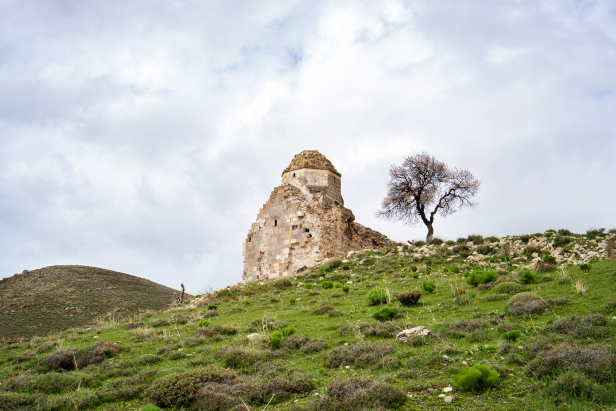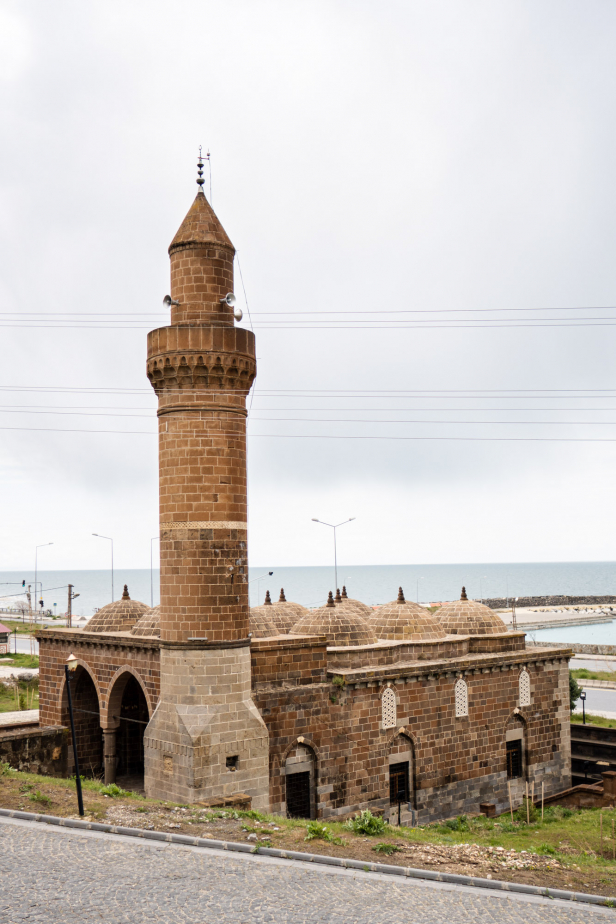The Town of Adilcevaz and Ardzgue Monastery
(Adilcevaz ve Harikalar Manıstırı)
/ By Josh
Cost: Free
Great for: Urartu History, Armenian History, Seljuk History, Ottoman History, Castles
The town of Adilcevaz is as ancient as any in Turkey and is home to a fascinating blend of remains from vastly different cultures and eras. A town of Bitlis province in the north-west of Lake Van its tourism potential has remained underdeveloped.
The specifics of Adilcevaz’s history is poorly understood, though inscriptions found in the Urartian castles prove a history going back nearly 3000 years to earliest days of the Iron Age. The site of ancient Adilcevaz offered an attractive blend of sheltered fertile valleys, lake shore, and rugged defensible mountains to the ancient inhabitants. Exactly how long the settlement at Adilcevaz lasted doesn’t seem to be well known, though Urartian civilization mysteriously collapsed in the late 7th century BC. The territory was later taken into the Achaemenian Empire though the valleys of Adilcevaz may have been abandoned during this time.
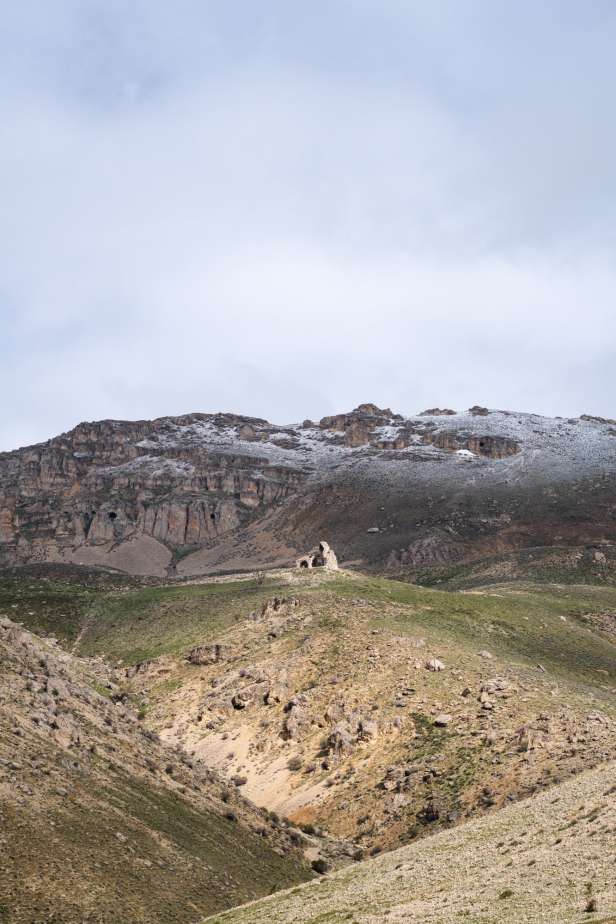
By the Medieval period Armenian culture had grown and thrived in the mountains stretching from the Caucasus region to the Mediterranean coast. The region around Lake Van became especially rich in Armenian culture with the building of numerous beautiful churches and monasteries, including the monastery at Adilcevaz. At this time there was an Armenian town in the valley named Ardzgue.
Subscribe to The Art of Wayfaring
The 12th century saw the Seljuks expand their control in the region, especially along the West shore of Lake Van where they ruled from Ahlat as the Ahlat-Shah or Ermen-Shahs (also Shah-Ermens), that is “Kings of Armenia.” In Adilcevaz the Seljuks built a castle on the ruins of the Urartian lower castle as well as a settlement.
The area was regular frontier between various powers and consequently the castle was destroyed during wars with the Persians. Under the Ottomans Adilcevaz was seen as strategic yet again and the castle was rebuilt as a part of the Ottoman campaign in the region against the Persian Safavids. Over the past century or so most of historic Adilcevaz has disappeared with only the largest structures surviving, though even these have needed major restoration.
Why Visit?
Adilcevaz Castle -Free
Adilcevaz Castle sits atop a naturally defensible hill that juts out to the water, overlooking the coast and the sheltered fields where the modern town now sits. The area to the immediate east of the castle is relatively flat and well watered. Further east the land is fertile and farmable though lacking in the natural protection of high plateaus and hills.
Like the history of Adilcevaz itself little seems to be known about the castle though it is believed that the site was used by the Urartians as a coastal castle, possibly in conjunction with the higher fortified city of Kef Castle. While there are Urartian traces here they are scant. Other elements of Adilcevaz Castle are left from the Safavids, Seljuks, and the Ottomans. The castle was destroyed and rebuilt especially during the Ottoman-Persian wars. The final form of Adilcevaz Castle is ultimately an Ottoman one as the Ottomans rebuilt the castle after it sustained heavy damage from the Persians (Safavids).
While the upper portion is the only significant portion remaining of the castle, there was once a lower section as well with an enclosing wall creating a settlement space between the upper keep and the coast. The Adilcevaz Grand Mosque and Zal Paşa mosque were a part of this lower settlement.
Subscribe to The Art of Wayfaring
Access to the castle is via a difficult-to-find road to the north east of the castle from in the midst of the village. There is a sign that says no entry though locals tell me this is just a leftover sign from when restorations were being done and can now be ignored. Whether you want to heed this sign is up to you.
Ardzgue Armenian Monastery (Harikalar Manastırı) – Free
Ardzgue Monastery, also known as Skantselagorgivank “The Monastery of Miracles”, sits on a high shelf to the north-west of the modern Town of Adilcevaz. The name “Monastery of Miracles” comes from a relic that was held in the monastery and was said to have healing powers.
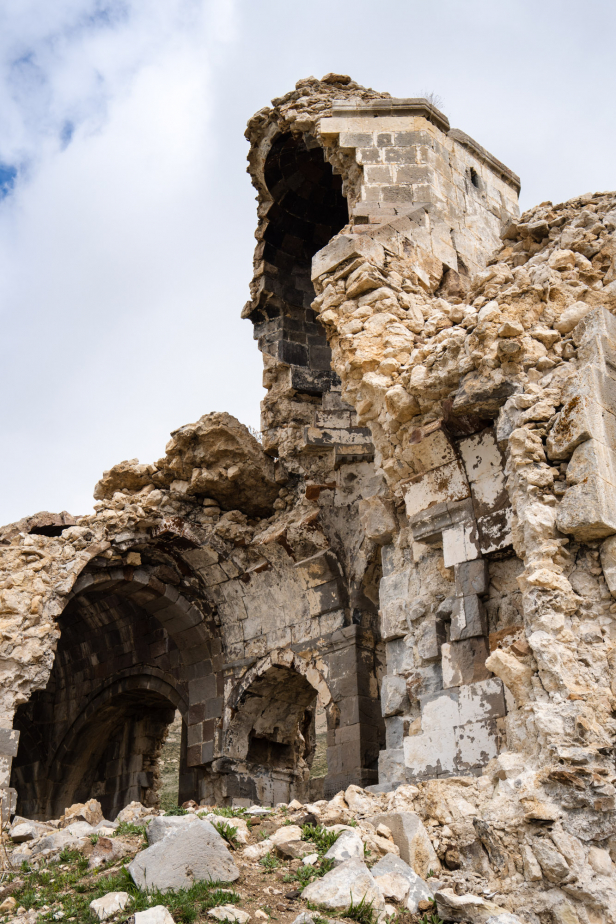
The church was a part of a wider monastic complex which has been reduced to rubble. The church itself is in a state of considerable ruin and its future is precarious. In its original state it would have been a grand and ornate church with a soaring dome cupola and finely built walls of ashlar masonry. At the heart of the church is a rather rare design where the weight of the cupola rests upon the vault of the apse, and a pair of stout pillars in the nave.
While much of the church is still standing, the south wall and the south portion of the cupola has collapsed. There are also holes in the north wall and looters pits throughout the site. Without greater protection and some amount of restoration the entire structure could soon be lost.
For more about the history and remains of Ardzgue Monastery see the full description in our Churches and Monasteries of Lake Van and Vaspurakan Guide.
Kef Urartian Castle (Kef Kalesi) – Free
Set some 550 meters above the lake shore, the Uratians built a fortified settlement on a high, triangular plateau above the modern town. The plateau is roughly “V” shaped with sheer cliffs on two sides formed by a pair of creeks that converge below.
Kef Castle is believed to have been built sometime in the 7th century BC and an inscription found at the site names the place as “A city of Haldi, in the Land of Ziuquni” (Haldi being one of the chief deities of the Urartian people). Alongside cuneiform inscriptions, detailed engravings of winged gods and lions were also discovered. Finds from Kef Castle can be seen at the Urartu Museum in Van, across from Van Castle.
Today there is little remaining of Kef Castle apart from scattered blocks of well-cut black basalt. Most buildings of this period used stone masonry for the lower portions of walls with a superstructure of wood and mud-brick on top, as a result the upper portions of buildings as well as the lower quality structures are lost with time, turning back to soil.
Subscribe to The Art of Wayfaring
Despite the destruction, the remains of a palace have been found. Based on the amount of earth found burying the site, its believed that there would have been three or even four storeys in some places with up to 130 rooms. A number of large halls were unearthed as well as a large store-room with large clay pots built into the floor.
Access to Kef Castle is via a dirt road that heads north out of the north-west corner of Adilcevaz. The road runs up the eastern side of the east valley below the castle and wraps around to the west when it gains the top of the valley. The dirt roads here turn to thick mud after it rains and become almost impassible. The other option is to hike to Ardzgue Monastery then cut east onto the Kef Castle plateau.
The Grand Mosque of Adilcevaz – Free
Built a little way up the slope of Adilcevaz Castle, the Grand Mosque of Adilcevaz overlooks the coast from a fair height. The Grand Mosque was first built in the 14th century by the Seljuks, then, sometime in the late 14th or early 15th century the mosque was converted into a madrasah by the Kara Koyunlu Turkomans. In the 16th century it was again converted into a mosque by the Ottomans who restored and expanded the structure, leaving it a rather strange and irregular shape.
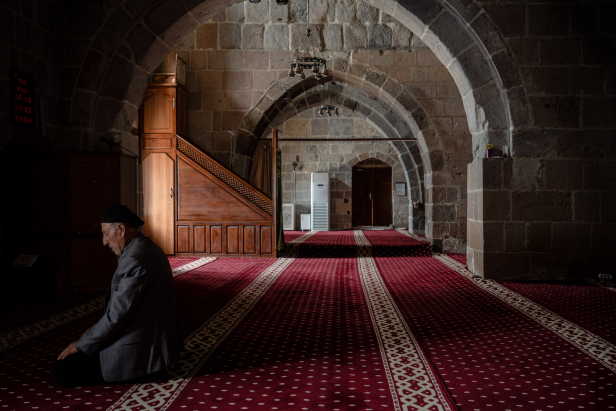
The mosque is a heavy-set and rather unadorned structure of long parallel vaults set on low arches. Windows are few and the interior is dark. The mosque is generally plain, lacking the ornate geometric patterns and grand doorways that the Seljuks are known for. The roof is simple and nearly flat, and the minaret lost.
Subscribe to The Art of Wayfaring
Zal Paşa/Tuğrul Bey Mosque – Free
Zal Paşa, also known as Tuğrul Bey Mosque, is built in the “Grand Mosque” style with a grid of nine domes set on high arched vaults, supported by four interior pillars.
Zal Paşa Mosque is the source of a great amount of confusion. First of all, it is regularly confused with the Great Mosque that sits just above it as “Great Mosque” can also refer to a particular architectural style that Zal Paşa is also built to. Secondly there is the date of construction and its reported claim to fame.
Many local newspapers and websites refer to Zal Paşa as being the first domed mosque built in Anatolia then go on to say that it was constructed in 1580 by Mimar Sinan. If the 16th century construction date is accurate then there would already have been domed mosques built in Anatolia for centuries prior including those built by Mimar Sinan, the most celebrated Ottoman architect who built Suleymaniye and Selimiye Mosques. The “Grand Mosque” layout was also rarely used by the Ottomans in this period. The confusion regarding a Mimar Sinan connection may be due to the fact that he designed another Zal Paşa mosque in Istanbul.
Godfrey Goodwin, in his book “Ottoman Turkey” refers to Zal Paşa Mosque as the Grand Mosque of Adilcevaz, built in the 16th century to replace the upper Grand Mosque. While this is certainly possible it would utterly refute the claim of “first domed mosque in Anatolia”. Godfrey makes no mention of “first domed mosque in Anatolia” nor “Mimar Sinan”.
For now, the exact history of Zal Paşa / Tuğrul Bey Mosque remains something of an enigma.
How To Get There
Public Transit
The Town of Adilcevaz sits along the E99 (Ağrı – Bitlis) highway running from Bitlis in the south-west to Erciş, Ağrı, and Doğubeyazit in the north-west. There is bus service along the road connecting the town to Bitlis and Ahlat semi-regularly.
Car
Adilcevaz sits along the lakeshore on the only real highway in the area and can be reached easily from Bitlis, Tatvan, Van, and Erciş. Highways here are good and easy to navigate.
For more about car rental and driving in Turkey make sure to read our full drivers guide.
Where To Stay
Bitlis in general is very underdeveloped in terms of amenities for tourists and hotels are difficult to come by. There is a small hotel in Adilcevaz, it is cheap, basic, and mostly aimed at serving locals passing through. If this hotel isn’t to your taste there are a couple options in Ahlat, though for a wider range of hotels you’ll need to look at Tatvan where most of Bitlis’s hotels seem to be clustered.
Have any tips or info to add? Spot any mistakes? We’d love to hear about it.


